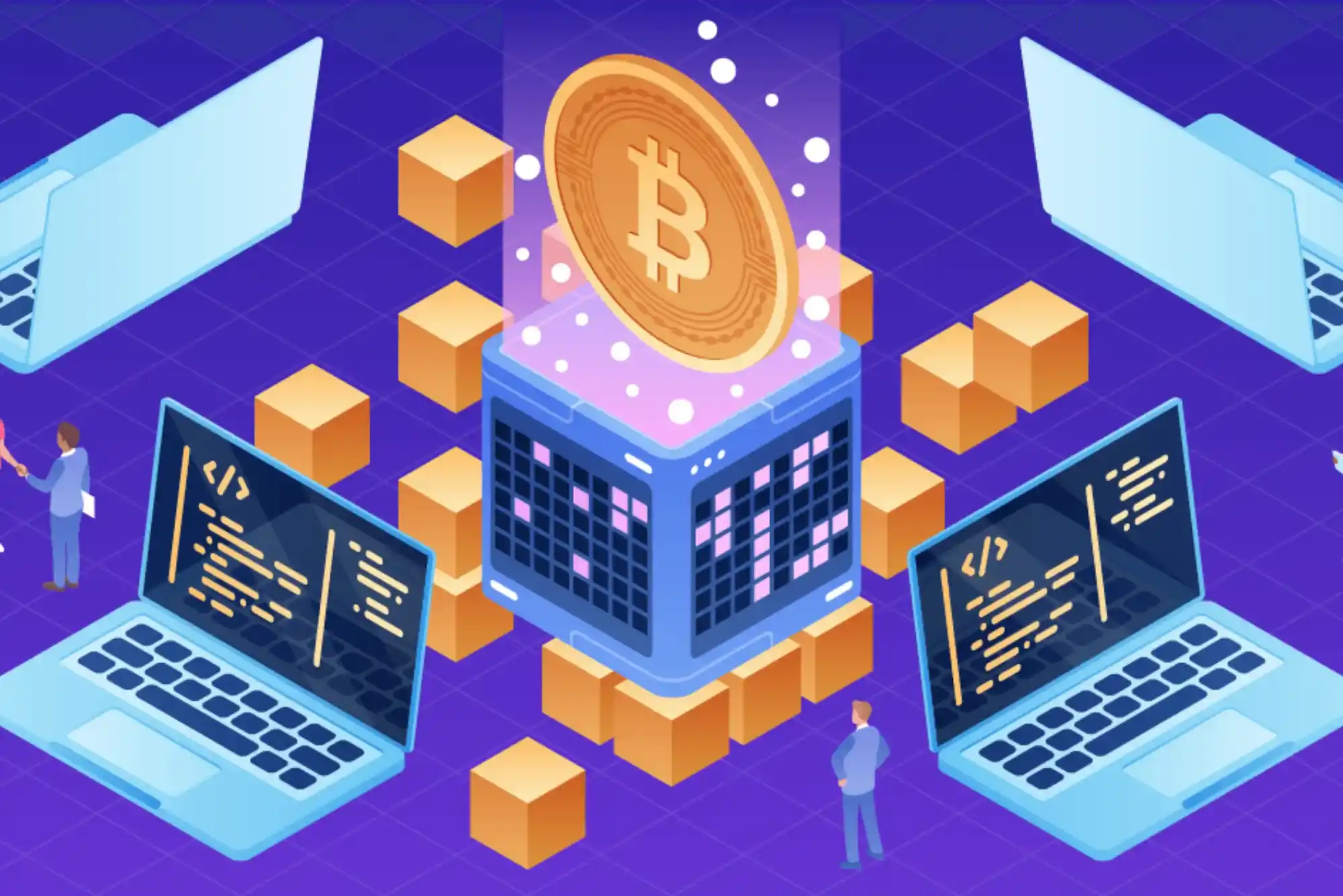Cryptocurrencies have become a major part of the digital economy, with various types serving different purposes. One of the most popular categories is Mineable Cryptocurrency. Unlike non-mineable coins, which are pre-mined and distributed at launch, mineable cryptocurrencies are created through a decentralized process known as mining.
In this article, we will explore how to create a mineable cryptocurrency, the essential steps, and considerations, while also discussing Cryptocurrency crashes, which can have an impact on newly developed coins.
Understanding Mineable Cryptocurrencies
Before diving into the process of creating a mineable cryptocurrency, it’s crucial to understand what they are and how they work. A mineable cryptocurrency relies on blockchain technology and consensus mechanisms such as Proof of Work (PoW) or Proof of Stake (PoS) to validate transactions. The process involves miners solving complex cryptographic puzzles to add new blocks to the blockchain. As a reward for their effort, miners are issued new coins, thereby increasing the supply of the cryptocurrency.
Define the Purpose and Use Case
Every cryptocurrency serves a purpose, and before you start building one, it’s important to define the reason behind creating your coin. Some questions to consider include:
- Will it be used for payments, smart contracts, or as a store of value?
- What problem will your cryptocurrency solve?
- How will it differentiate itself from other mineable cryptocurrencies?
Defining the use case will help attract miners and users to your cryptocurrency. If your project has a unique and innovative solution, it will be easier to gather a community of supporters.
Choose the Consensus Mechanism
The consensus mechanism is crucial for ensuring the security and integrity of your blockchain. There are several options to choose from when creating a mineable cryptocurrency:
- Proof of Work (PoW): This is the most common consensus mechanism for mineable cryptocurrencies, used by Bitcoin and other major coins. It requires miners to use computational power to solve complex puzzles. PoW is energy-intensive but highly secure.
- Proof of Stake (PoS): This mechanism allows users to mine or validate block transactions based on the number of coins they hold. It’s less energy-consuming than PoW but can lead to centralization if a few people hold most of the coins.
- Hybrid Consensus Mechanisms: Some cryptocurrencies use a combination of PoW and PoS to strike a balance between security and energy efficiency.
Selecting the right consensus mechanism depends on your priorities, such as security, scalability, and energy consumption. Most new mineable cryptocurrencies choose PoW due to its proven security model, though PoS is becoming more popular due to environmental concerns.
Choose the Blockchain Platform

Creating a mineable cryptocurrency requires a solid blockchain platform. There are two ways to approach this:
- Create a New Blockchain: This gives you complete control over the architecture and rules of your cryptocurrency. However, building a blockchain from scratch is a complex task and requires expert knowledge in cryptography, computer science, and blockchain development. You will also need to attract miners to ensure the security of the network.
- Fork an Existing Blockchain: If you’re not ready to build a blockchain from the ground up, you can fork an existing open-source blockchain, such as Bitcoin or Ethereum. Forking allows you to copy and modify the original code to fit your needs. This is a simpler method and can save time, but it also means you’ll inherit the limitations of the original blockchain.
Many new mineable cryptocurrencies are forks of Bitcoin or Ethereum because they are well-established and have a large developer community for support.
Create the Coin
Once the blockchain is set up, you’ll need to create the actual cryptocurrency. This involves defining several key parameters:
- Block Time: This is the time it takes to mine a new block. For example, Bitcoin’s block time is 10 minutes, while Ethereum’s is around 15 seconds. A shorter block time increases the speed of transactions but can reduce the security of the blockchain.
- Maximum Supply: Decide on the total number of coins that will ever be mined. Bitcoin, for example, has a maximum supply of 21 million coins. Limiting the supply of your cryptocurrency can create scarcity and potentially drive up its value.
- Block Reward: The block reward is the amount of cryptocurrency that miners will receive for validating a block. Over time, this reward may decrease to incentivize scarcity, similar to Bitcoin’s halving events.
- Difficulty Adjustment: This is a mechanism that adjusts the difficulty of mining to ensure that blocks are mined at regular intervals, even as more miners join the network. The more miners there are, the more difficult it should be to mine a block, ensuring the security and longevity of the network.
Establish a Network of Miners
To create a sustainable and secure cryptocurrency, you’ll need miners. They are the backbone of any mineable cryptocurrency because they ensure that transactions are valid and blocks are added to the blockchain. Here are ways to encourage miners to participate:
- Offer Competitive Rewards: Higher block rewards will attract more miners, but be careful not to offer too much, as this could lead to inflation and reduce the value of the cryptocurrency.
- Community Engagement: Building a strong community of miners is essential. Consider engaging with online forums, social media, and other cryptocurrency communities to promote your coin and encourage miners to join.
- Incentivize Mining Pools: Mining pools allow individual miners to combine their resources to increase their chances of solving blocks. By incentivizing mining pools, you can increase the likelihood that your cryptocurrency will gain traction.
Implement Wallets and Exchanges
For your mineable cryptocurrency to be practical, you’ll need to create wallets and ensure that your coin is available on cryptocurrency exchanges.
- Wallets: A wallet allows users to store and manage their cryptocurrency securely. You can develop your own wallet or integrate with existing wallet solutions, such as Electrum or MetaMask.
- Exchanges: Listing your cryptocurrency on exchanges is essential for allowing users to buy, sell, and trade your coin. Reaching out to established exchanges to list your mineable cryptocurrency will provide liquidity and help your coin gain visibility.
Test the Network
Before launching your cryptocurrency, it’s critical to thoroughly test the network to ensure there are no vulnerabilities. You can do this by setting up a testnet, which is a replica of your main blockchain used for testing purposes. In this phase, you’ll want to:
- Simulate various mining scenarios
- Test the consensus mechanism
- Check for bugs or security issues
This step is essential because a poorly tested cryptocurrency can face security breaches, which could lead to Cryptocurrency crashes and a loss of investor confidence.
Launch and Promote the Cryptocurrency

Once testing is complete and your network is secure, it’s time to launch your cryptocurrency. This involves several key actions:
- Announce the Launch: Make a public announcement on relevant cryptocurrency forums and social media channels. Provide information about how users can start mining and where they can trade your cryptocurrency.
- Build Partnerships: Partnering with other blockchain projects, exchanges, and crypto services can help build credibility and expand your user base.
- Monitor the Network: After the launch, it’s important to continuously monitor the network for any issues or vulnerabilities. Providing updates and improvements to the cryptocurrency will ensure long-term success and user trust.
Risks and Considerations: Cryptocurrency Crashes
Despite the excitement of launching a new mineable cryptocurrency, it’s important to be aware of potential pitfalls. One significant risk is Cryptocurrency crashes. These crashes can occur due to various factors such as regulatory changes, security breaches, or market volatility. A crash can significantly reduce the value of your cryptocurrency, leading to a loss of confidence from investors and miners alike.
To mitigate these risks, ensure that your cryptocurrency is built on a solid technical foundation and has a clear use case. Regular updates, security audits, and community engagement are critical in preventing crashes and maintaining the longevity of your project.
Creating a Mineable Cryptocurrency is a complex but rewarding process that requires careful planning, technical expertise, and community engagement. From choosing the right consensus mechanism to building a network of miners, each step plays a crucial role in the success of your cryptocurrency.
However, it’s essential to be mindful of risks, such as Cryptocurrency crashes, and to continuously monitor and improve your project. By following the steps outlined in this guide, you can successfully create and launch your own mineable cryptocurrency.




